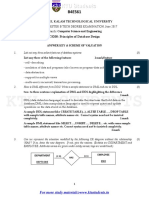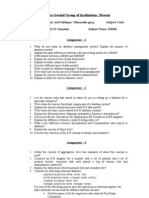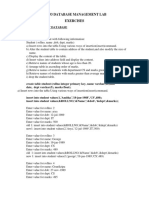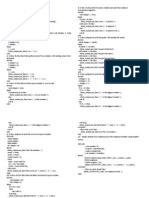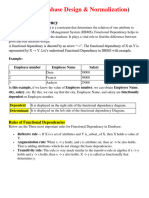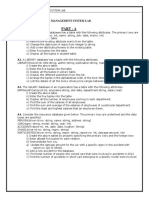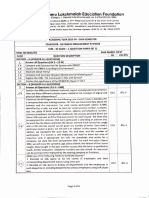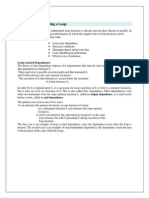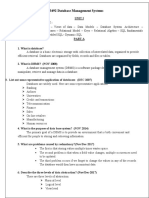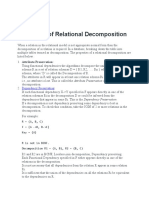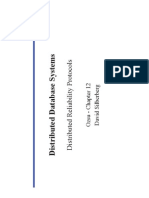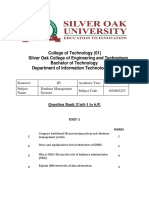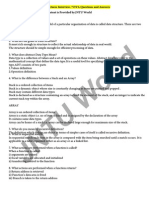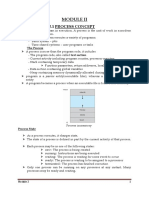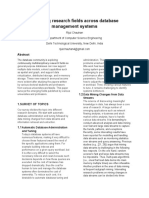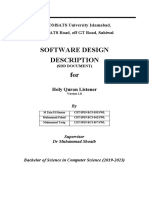100% found this document useful (1 vote)
2K views33 pagesAnswer Key - DBMS - June 2022 (2019 Scheme)
The document describes three key characteristics of database systems:
1. Self-describing nature - The database contains metadata that describes the database structure and constraints.
2. Insulation between programs and data - The structure of data files is stored separately from access programs, providing program-data independence.
3. Support of multiple views - A database can have many users, each with their own perspective or view of the data. Views allow different subsets or virtual data for different user groups.
Uploaded by
Althaf AsharafCopyright
© © All Rights Reserved
We take content rights seriously. If you suspect this is your content, claim it here.
Available Formats
Download as PDF, TXT or read online on Scribd
100% found this document useful (1 vote)
2K views33 pagesAnswer Key - DBMS - June 2022 (2019 Scheme)
The document describes three key characteristics of database systems:
1. Self-describing nature - The database contains metadata that describes the database structure and constraints.
2. Insulation between programs and data - The structure of data files is stored separately from access programs, providing program-data independence.
3. Support of multiple views - A database can have many users, each with their own perspective or view of the data. Views allow different subsets or virtual data for different user groups.
Uploaded by
Althaf AsharafCopyright
© © All Rights Reserved
We take content rights seriously. If you suspect this is your content, claim it here.
Available Formats
Download as PDF, TXT or read online on Scribd
/ 33


